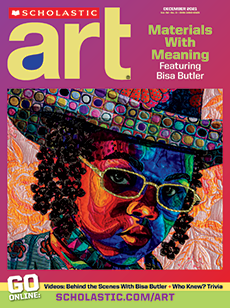By the time Takashi Murakami earned his doctoral degree in nihonga painting in 1993, he was frustrated by the idea of high art. Why, he wondered, didn’t critics and collectors see anime and manga—which he devoured as a kid—as being as worthy as any painting in a museum? This frustration helped lead Murakami to create the Superflat aesthetic, which he introduced in 2000. His goal was to “flatten” the divide between high art and popular culture.
In 1996, just a few years before Murakami introduced the concept of Superflat, he completed his now iconic 727, above. It illustrates the artist’s experiments with flattening his work—visually and conceptually.
Takashi Murakami got his start studying Japanese nihonga painting. But the more time he spent working in this style, the more he wondered why only high art—like nihonga—was for museums and wealthy people. Murakami felt frustrated that anime and manga didn’t receive the same respect as high art. In 2000, he united high and low art by introducing his Superflat approach to art making.
The artist began experimenting with this concept in 1996. In his now iconic 727, above, he “flattens” the divide between high art and popular culture.
